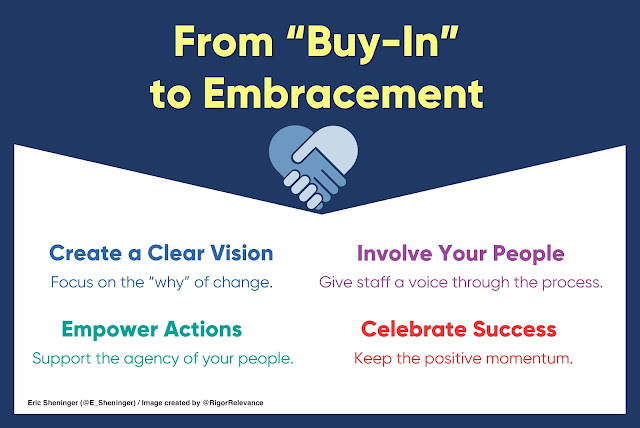Leadership embodies consistent qualities and characteristics that remain unchanged while the tools, research, and societal shifts influencing the work have evolved. Leadership combines artistic and scientific elements, aiming to mobilize people toward a shared objective. Despite my extensive writing on the subject, I continuously seek additional insights to assist others, including myself, in excelling in this role.
Co-create a vision
A shared and co-created vision has the potential to transform an organization's culture. However, true leadership lies in progressing from the visioning process to developing a strategic plan that transforms the vision into reality. While a shared vision is an attribute of great leaders, the best leaders ensure the formation and meticulous implementation of a strategic plan. A vision must be accompanied by a plan that directs the change initiative, and this plan should be monitored and evaluated for sustainable, transformative outcomes.
Establish boundaries
Leaders understand that an unregulated environment will not facilitate necessary change. Establishing boundaries helps align everyone with the vision and agreed-upon actions. Setting norms, though not overly restrictive, fosters an environment where people feel comfortable taking risks. Boundaries are crucial for establishing and maintaining relationships, as trust is the foundation for effective relationships, learning, and change.
Leverage intrinsic motivators
I recommend reading Dan Pink's book, "Drive." Extrinsic rewards are problematic as they create an expectation and seldom result in lasting cultural changes. As Pink revealed, autonomy, mastery, and purpose are the keys to unlocking and sustaining intrinsic motivation. Exceptional leaders assist others in recognizing the value of their work and the transformative potential it holds for their professional growth.
Navigate
Similar to plotting a course when a ship sets sail, leaders determine the direction by establishing practical and achievable goals that are clearly communicated. Effective communication is an essential trait of a successful leader. Without a clear understanding of their current position or the desired destination, the chances of success become limited.
Be an Example
Leadership is about action, not merely position, title, or power. Effective leaders do not command others but guide them to where they need to be. Leaders must model the behavior they expect from others and be an example.
Build Capacity
Sustainable change cannot be sustained by a single individual. Although an individual can initiate the process, it requires a collective effort to make change stick. Delegation and trust-building empower others to actively participate in the process. Leadership is a collaborative endeavor.
Own Mistakes
Mistakes are inherent to being human, and admitting and owning them is crucial for establishing a culture of trust. Own your mistakes, but do not allow them to define you. Additionally, do not dwell on the mistake but rather focus on the lessons learned.
Tackle Challenges
Challenges come in various forms, whether it's a small percentage of individuals causing the majority of problems, unpopular decisions, resource constraints, or diminishing support. Effective leaders do not shy away from addressing these challenges, recognizing that leadership is not a popularity contest.
Overcome Fear
We all have fears, but they should not hinder our professional growth. Fear of the unknown or failure often holds us back from embracing change. I can’t stress enough the importance of facing our fears rather than running away from them. Choices shape our lives, and succumbing to fear prevents us from reaching our full potential. Embracing risks may lead to failure, but it also offers valuable learning experiences through reflection, enabling improvement in practice and personal growth.
Scalability
Leaders are evaluated based on their ability to guide their organizations to achieve and sustain success at a macro level. It is a calling and responsibility to propel a culture forward for improved outcomes in ways that are scalable. Effective leaders prioritize efficacy in ideas, strategies, decisions, and programs while embracing accountability. The result is scalability.
Patience
Leadership is not an isolated event but an ongoing process. Meaningful change seldom occurs rapidly, and transforming a culture requires time and patience. While urgency is necessary for certain aspects, system-wide results and achievements take time. Setting expectations and goals while understanding that they may take years to fully materialize is essential.
Leadership is a demanding task, and achieving effectiveness in it is more challenging than mere words suggest. It's important to recognize that perfection and constant peak performance are not required. However, the key responsibility lies in assisting others in attaining a shared objective that yields tangible outcomes. Are you ready to embrace this challenge?

